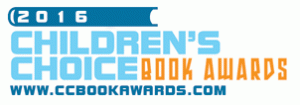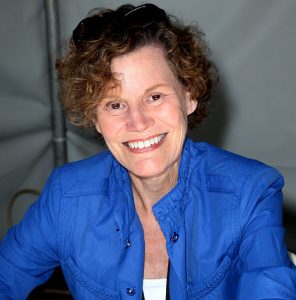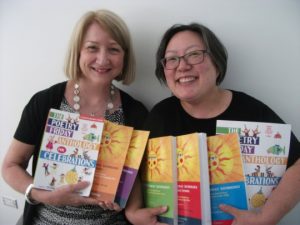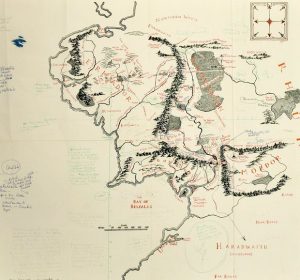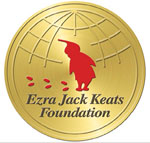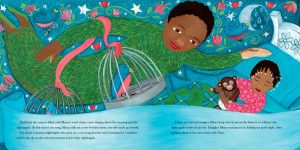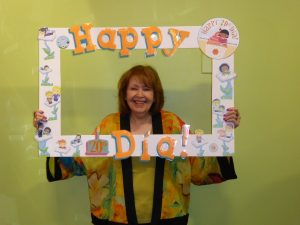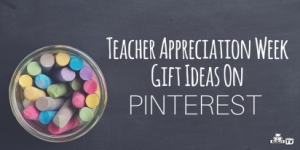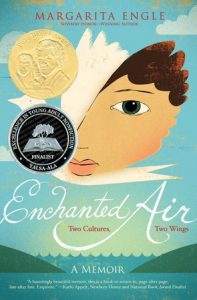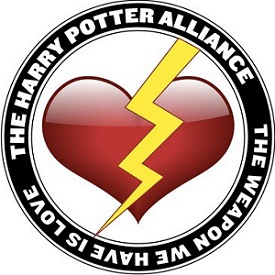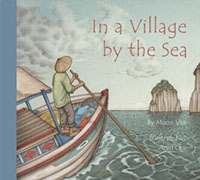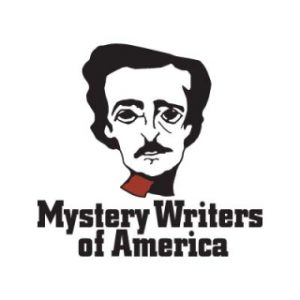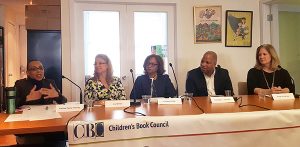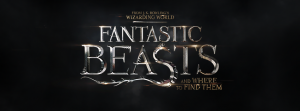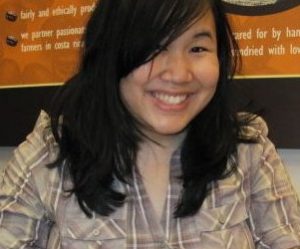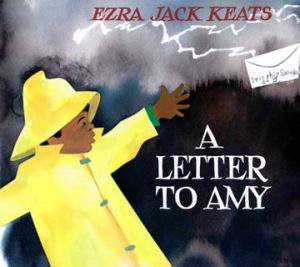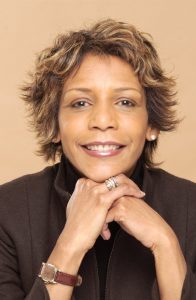Industry News
-
Ninth Annual Children’s Choice Book Awards Winners Announced During the 97th Annual Children’s Book Week
New York, NY — May 6, 2016 – The Children’s Book Council and Every Child a Reader today announced the winners of the ninth annual Children’s Choice Book Awards (CCBA). …
-
The Rise of the Wordless Picture Book
Led by moderator Allyn Johnston, v-p and publisher of Beach Lane Books, author-illustrators Henry Cole, Raúl Colón, Marla Frazee, Stephen Savage, and David Wiesner discussed the liberation that comes with purely visual storytelling — …
-
Judy Blume and Her Husband Open a Bookstore in Florida
Both Blume and Cooper have been devoting a great deal of their time to Books & Books Key West. They have enjoyed taking a hands-on approach with the operations of …
-
Most Diverse? Verse! 5 Easy Steps for Promoting Diversity with Poetry
Contributed by by Janet Wong and Sylvia Vardell
Where do we find the most diversity in any genre in children’s literature? Poetry—but it might not always be easy to see, as much of the diversity is embedded in anthologies that aren’t necessarily categorized as diverse. In the 700+ poems that we have published so far in The Poetry Friday Anthology series, nearly a third reflect diverse experiences of culture, language, religion, and more, including poems that address underrepresented topics such as Diwali (by Uma Krishnaswami), Ramadan (by Ibtisam Barakat), Day of the Dead (by René Saldaña, Jr.), Dashain (by Margarita Engle), and Gay Pride Day (by Lesléa Newman).
You might never look to the National Geographic Book of Nature Poetry, edited by J. Patrick Lewis (National Geographic, 2016), for diverse poems, yet it contains poems by 20 diverse poets. Poems to Learn by Heart, compiled by Caroline Kennedy (Disney, 2013), contains poems by at least 17 diverse poets. And more than a quarter of the poets are diverse in The Death of the Hat: A Brief History of Poetry in 50 Objects by Paul B. Janeczko (Candlewick, 2015).
No other genre, however, goes out of print more quickly than poetry. Our challenge: How can we make sure that diverse poetry books find their audience? Here are things we’ve been trying:
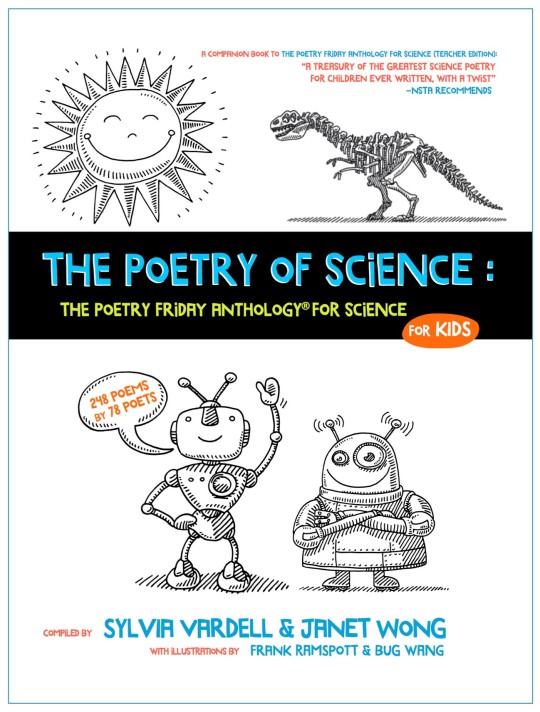
1. Give Poetry a Media Boost. Remind media outlets that many children’s poems take only 20 seconds to read; send frequent suggestions of poems that can be read at the beginning or end of a television or radio segment. Poetry also lends itself to social media sharing since you can tweet a line or create a graphic to convey a lot in a compact package.
2. Make Poetry Swag. Use diverse poems in short format cards and handy giveaways. It’s easy and inexpensive to make effective poetry swag that you can distribute at conferences such as ILA, NCTE, TLA, ALA, and also BEA. Encourage independent booksellers to give freebies to budding poetry fans. We encourage booksellers and educators to visit our Pinterest board where hundreds of poems are downloadable and free.
3. Promote Poetry as Read-Alikes. Pair poetry books with other works of fiction or nonfiction for “read-alike” suggestions connected by theme or topic (like family, food, animals, school) in promotional materials. Get inspired by “Hamilton” and create visuals that cast classic poems with diverse characters.
4. Cultivate Talent. Publish more anthologies of stories, essays, and poems by diverse authors. Be open to new poetic formats from various traditions. Editors: before sending a rejection letter to an author of color for a picture book, poetry collection, or novel that doesn’t fit the needs of your publishing house, consider whether you can use that author’s talents in a future anthology or even add that author to a current work-in-progress.
5. Highlight Diverse Poets. Suggest teams of diverse poets from a single anthology for “Featured Author” sessions at festivals, conferences, and promotional videos. In January of this year, Pomelo Books worked with children’s literature professor Jeana Hrepich at Antioch University (Seattle) to create programs for MultiCultural Children’s Book Day with a team of poets: Carmen T. Bernier-Grand, Julie Larios, Charles Waters, and Janet Wong.
Poetry is the ideal vehicle for promoting diversity in children’s literature.I It can be read in just a few minutes, but holds great depth, beautiful language, and much feeling. And with very little effort, we can make sure that diverse poems reach many more children and grow a few more poets for the future.

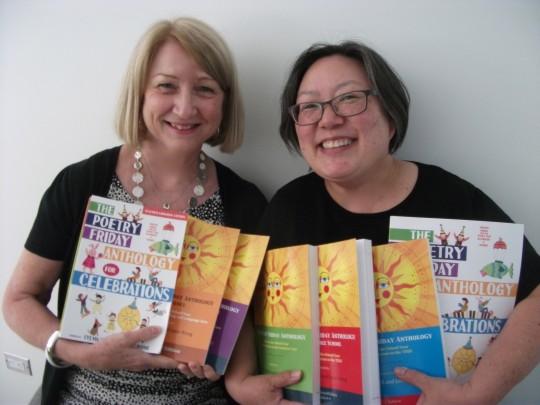
Sylvia Vardell (left) is Professor in the School of Library and Information Studies at Texas Woman¹s University and the 2014 recipient of the ALA Scholastic Library Publishing Award. Her current work focuses on poetry for children, including a regular blog, PoetryforChildren and the poetry column for ALA’s Book Links magazine.
Janet Wong (right) is a graduate of Yale Law School and former lawyer who switched careers and became a children¹s poet. Her dramatic career change has been featured on The Oprah Winfrey Show, CNN¹s Paula Zahn Show, and Radical Sabbatical.
Together, Vardell and Wong are the creative forces behind Pomelo Books and The Poetry Friday Anthology series, launched in 2012 and adopted by thousands of school districts nationwide.
-
Annotated Map of Middle-Earth Acquired by Bodleian Library
The map was discovered only last year, inside a book belonging to the late illustrator Pauline Baynes. It will be featured alongside other materials related to Tolkein’s writing, including manuscripts of The …
-
Winners of 30th Annual Ezra Jack Keats Bookmaking Competition Announced By Ezra Jack Keats Foundation and New York City Department of Education
City-wide Winners Receive $500 Cash Prize; Winning Books and Honorable Mentions on Special Exhibit May 2-27 at Brooklyn Public Library NEW YORK—April 28, 2016—The Ezra Jack Keats Foundation, in partnership …
-
#DrawingDiversity: ‘Mama’s Nightingale’ illustrated by Leslie Straub

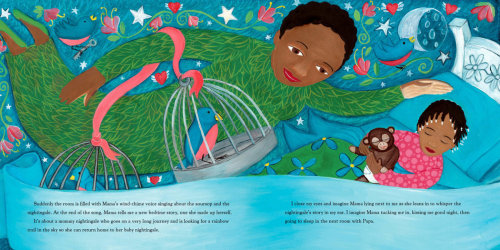
Mama’s Nightingale: A Story of Immigration and Separation by Edwidge Danticat, illustrated by Leslie Straub (Dial Books/Penguin Young Readers Group, September 2015). All rights reserved
-
Día Founder Pat Mora Promotes Literacy for All
This year, Día celebrations took place in 38 states, including Alaska, with festivities held in 25 languages, and Mora shows no signs of slowing down. She is also committed to promoting a wider range …
-
Happy Teacher Appreciation Week!
In honor of Teacher Appreciation Week, KidLit.TV has shared ideas for celebrating the teachers who inspire us each and every day. Check out KidLit.TV’s Pinterest board for fabulous gift ideas! Teachers …
-
2016 Hopkins Poetry Award Winner Announced
UNIVERSITY PARK, Pa. — Penn State University Libraries and the Pennsylvania Center for the Book are pleased to announce the winner of the 2016 Lee Bennett Hopkins Poetry Award. This …
-
ALA and The Harry Potter Alliance Launch ‘Spark’ Advocacy Video Series
WASHINGTON, D.C. — The American Library Association (ALA) joined the Harry Potter Alliance in launching “Spark,” an eight-part video series developed to support and guide first-time advocates who are interested …
-
#DrawingDiversity: ‘In a Village by the Sea’ by Muon Van, illustrated by April Chu
In a Village by the Sea by Muon Van, illustrated by April Chu (Creston Books, May 2015). All rights reserved.
-
2016 Edgar Allen Poe Awards Announced
This year’s winners for juvenile and young adult fiction are: BEST JUVENILE Footer Davis Probably is Crazy by Susan Vaught (Simon & Schuster – Paula Wiseman Books) BEST YOUNG ADULT …
-
CBC Diversity Panel: “Recruiting Diversity”
The publishing industry has come under fire for its lack of diversity, with recent surveys by Publishers Weekly and Lee & Low Books revealing a mostly homogeneous workforce. Led by moderator Andrea …
-
J.K Rowling’s ‘Fantastic Beasts and Where to Find Them’ Screenplay to be Published
London, England — Pottermore, the global digital publisher of J.K. Rowling’s Wizarding World announced today, as part of their new publishing programme, that the screenplay of Warner Bros. Pictures’ feature film …
-
How I Got into Publishing: Jennifer Ung, Associate Editor, Simon Pulse
Like many children of Asian immigrants, I grew up believing there are only two paths you can take in life: pursue medicine, or pursue law. It never occurred to me as a kid that I could follow anything other than the path my parents so carefully laid out for me: college close to home, stable job, Asian husband, a litter of babies. “Dream jobs” are for white people, I was always told, not for you.
Despite knowing that, I had a deep, deep love for reading. At any given point in my childhood, I’d be buried in a story, accompanied by the likes of Pooh, of Harry Potter, of Mrs. Piggle Wiggle. My parents would encourage my love of books because they knew it would help me in my studies. But little did they know that this early reinforcement would lead to my wanting to make a career out of it, to rebel against the blueprint they’d made for my life since before I was born.
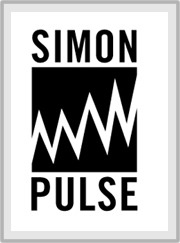
As a teenager, I felt caught between two worlds. In one, I was a dutiful daughter, who wanted to honor my Cambodian heritage and make my parents proud on their terms. And in the other, I was an American, who wanted a career as a book editor, wanted to pursue this very Western ideal of “doing what you love.” It seemed impossible to reconcile my worlds, to find common ground among such disparate identities. So when college application season rolled around, I had some of the most difficult conversations with my parents I’ve ever had. Immigrant family or not, it’s never easy being a teenager having to articulate why you want to do something when your parents just don’t see the world the same way you do. Especially when said thing involves a cross-country move, gargantuan student-loan debt, and a college degree that practically reeks of unemployment.
But in spite of these difficult conversations, I was still privileged to have parents who were open-minded enough to allow me down this unconventional path, even if they didn’t believe in it themselves. (I swear, my mom still occasionally mentions that it’s not too late for pharmacy school…) I was given a privilege many of my peers were not—to be able to take a risk with my future. There were no expectations for me to send money home, to do anything beyond support myself. I am aware of this privilege I carry, and the guilt stemming from that is something I think about all the time.
As soon as I moved to New York for college, it was a whirlwind from there. I had a wealth of opportunities I wouldn’t have had where I grew up in Southern California. I did a slew of unpaid internships at literary agencies and publishing houses, worked at a few bookstores, and curated connections that eventually led to my first job in publishing, as an editorial assistant at Scholastic.
I am constantly thinking about why there are so few people from traditionally marginalized backgrounds in the industry, and I always come up with the same sense of discomfort. I worked hard to get that first job in publishing, certainly, but a lot of the systemic barriers that keep the industry the way it is—being predominantly New York-based, surviving on unpaid internships, low starting salary, to name a few—I was able to overcome through sheer luck, some very generous people, and again that word, privilege. Until we as an industry think more critically about these barriers and come up with concrete solutions, we’ll never change. Thankfully, the tides seem to be turning. Survey results are being shared, think-pieces written, uncomfortable conversations happening, all over the industry.
In the meantime, I’m doing everything I can in my current role to elevate marginalized voices, to bring into the world new perspectives that haven’t yet been featured, so maybe teenagers today (and tomorrow and for the next bajillion years) don’t have to struggle as much as I did to imagine a future full of infinite possibilities.

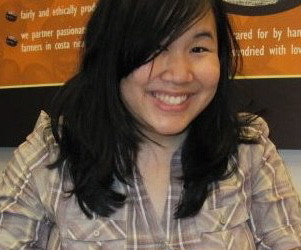
Jennifer Ung is an associate editor at Simon Pulse, an imprint of Simon & Schuster Children’s Books. Her previous experience includes editing books for teens and tweens at Scholastic and hand-selling books and moderating events at Books of Wonder. When she’s not reading or talking about books, you can find her waxing poetic about food, playing uselessly complicated board games, and thinking of new ways to incorporate Mean Girls quotes into everyday conversation. Follow her on Twitter @jenpanda.
-
The Diversity of Imagination
Contributed by Christine Bronstein, Founder, Nothing But The Truth Publishing
Many topics are being explored around diversity in children’s books, which I think is critical to our world. Publisher’s Weekly reported that the Association of Writers and Writing Program’s annual conference had “more panels than ever addressing issues of diversity in both adult books and children’s books and inclusivity in terms of whose work is being published and promoted.” As an author and a publisher—and a very white one—I wonder if we don’t need a new framework to understand the importance of this topic for our culture as a whole. Maybe we should view the lack of diverse voices as a cultural problem that extends beyond the color of our skin; one that may form our views of the world as literally more black and white than they are.
Books, like no other craft, give us windows into the imagination and world of the creators. Children’s books help children make sense of the world around them and aid the development of language and thinking. Books help children with social cognition, providing them with a deeper understanding of how the social world works.
What happens to a culture where only the imaginations and inner worlds of one race or one gender or one way of living our lives is laid out for us to examine? It inherently creates a sense of separateness for those both outside and inside of the dominant culture being represented. I believe that pushing for diversity in children’s books may be one very important key to opening the minds and hearts of our culture as a whole.
I asked Maria Martin, long time Kindergarten teacher—and author of our upcoming children’s book, which aims to help children communicate inclusively about race and heritage—how the lack of diversity in children’s books affects children. She told me:
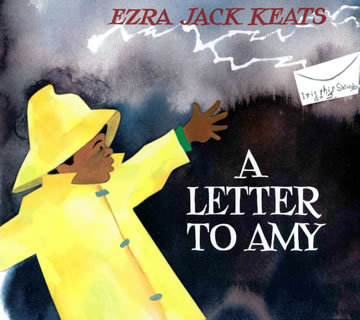
“Children need to see themselves in books in order to connect to the world of books. When students of diverse backgrounds only see books by and about the majority culture, they get the message that books are not for them. We also give students the message that their life experiences are not important. The message for white students is that cultural diversity is not something to embrace and value. Books are such a critical component to education that when students feel excluded from that component, it reverberates through their entire educational experience in a negative way. As an educator of young children, my biggest goal is to instill a lifelong love of learning. Because books are a crucial tool for learning, students have to learn to love books. Students learn about the world through books, so we have a responsibility to make sure that the world we represent through books is accurate.
“Recently, I read the book A Letter to Amy, by Ezra Jack Keats, to my daughter. She continued to ask me to read the book for several nights in a row. When I commented that she really must like this book, she said ‘I like this book because Amy looks like me.’ As a brown-skinned child with long, thick braids, she doesn’t always get to see herself in books. The benefits of diverse books for children of all cultures and backgrounds are endless.
So, when the few books by and about people of color are relegated to a niche shelf on the far side of a bookstore, or worse, not published, we further ingrain this idea of separateness into young minds. By doing this we are saying that someone’s world and imagination aren’t as interesting or universal because of their race, gender, or sexual orientation. What if we had all grown up with equal representation of races in children’s books, allowing us to choose characters we admire and connect with based on attributes other than race?
If the goal is actually inclusion—as many in the publishing world are claiming—the path should not only be to publish, review and promote diverse voices, but also to open our minds to our sameness, our oneness, and ingrain in ourselves and our children that no person can be neatly slotted into one section or another. Make sure the children around you are exposed to as many diverse books as possible so they have a full understanding of what it means to live in our world.
Here are some of Maria Martin’s favorite inclusive books for kids:
Shortcut, Donald Crews
Come on Rain Karen Hesse
Last Stop on Market Street, Matt de la Peña
Grandfather’s Journey, Allen Say
I Have a Dream, Dr. Martin Luther King, Jr.
Whistle for Willie, Ezra Jack Keats
Mufaro’s Beautiful Daughters, John Steptoe

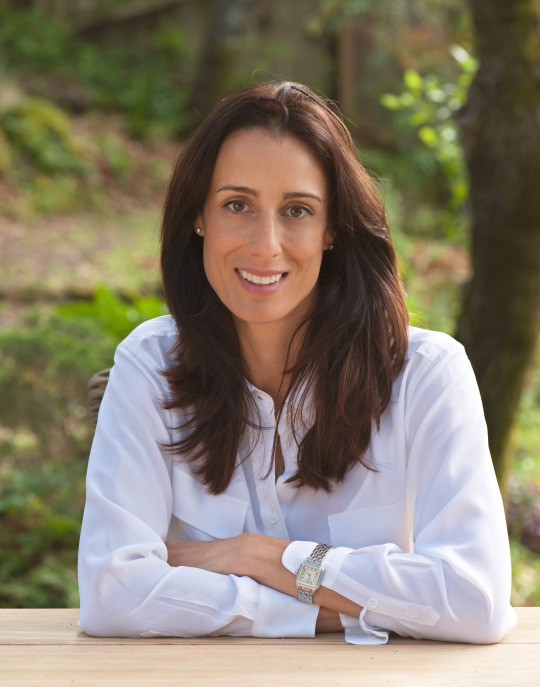
Christine Bronstein is the founder of Nothing But The Truth Publishing, an independent publishing house specializing in works by diverse female authors. She is also the author of the popular Stewie BOOM! children’s book series. In 2009, she started A Band of Women, a social network and information website for women. Chris’s writing has been published on Forbes.com, the San Francisco Chronicle, Huffington Post, and on Maria Shriver’s website. She has been featured in Elle, 7x7 Magazine and The San Francisco Chronicle.
-
Free Sync Audiobooks For Teen Summer Program Encourages Literacy Through Listening
01Portland, ME — The SYNC Audiobooks for Teens program, sponsored by AudioFile Magazine and powered by OverDrive, kicks off its seventh year with an exciting lineup that includes bestselling and award-winning authors …
-
Remembering Diversity Advocate and Publisher Jackie Carter
Facing racial discrimination in her predominantly white hometown, Carter longed for stories that reflected her identity and experience. She went on to work at Sesame Street magazine, Disney-Hyperion and Scholastic, where …
-
James Patterson Recognized With The AASL Crystal Apple
CHICAGO, IL — Best-selling author James Patterson has been selected by AASL President Leslie Preddy as the 2016 Crystal Apple recipient. The honor is awarded to an individual or group …

